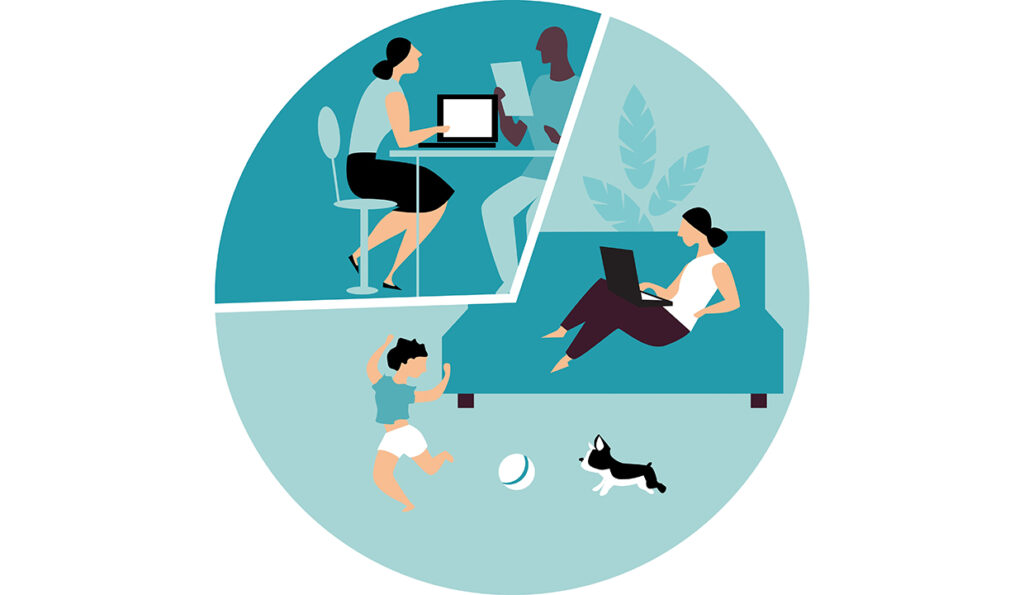The work setup of companies has drastically changed in the past two years due to the pandemic. During the lockdowns, companies were forced to implement work- from-home setups for most of their employees due to strict government rules.
As the restrictions loosened, companies gradually brought back more and more of their employees to the office, with most companies opting for hybrid setups.
With Metro Manila, along with many parts of the country, placed under the most lenient Alert Level 1 for a while now, more workers are expected to go back to the offices.
Business Revival
“With Alert Level 1 being constantly declared in Metro Manila, we expect more companies to bring back more of their employees to the office. The revival in business activities is driving corporates to bring back more employees to the office,” said Cushman & Wakefield Philippines director and head of Research, Consulting & Advisory Services Claro Cordero.

Lobien Realty Group Inc. (LRG) CEO Sheila Lobien said there are three reasons companies are instituting the back-to-office setup. One reason, particularly for the Business Process Outsourcing (BPO) industry, is the mandated return to the office by the government for those Philippine Economic Zone Authority (PEZA) areas as the non-compliance will result in lost tax benefits.
According to recent news reports, the Fiscal Incentives Review Board (FIRB) allowed information technology-business process management (IT-BPM) companies registered with the PEZA to implement a 70 percent onsite, 30 percent work-from-home setup until Sept. 30.
Another reason employees are returning to the office is the slow internet speed.
“Internet speed is still too slow in the country, even in Metro Manila, which affects employee productivity,” Lobien said.
In line with productivity, Lobien said another reason for the return to the office is that many of the local businessmen still view the physical reporting to work as important in employee productivity monitoring and building teamwork.
“Of course, there are activities that are better done in a face-to-face setting like closing of deals, negotiations and sales calls which are very difficult to replicate in a virtual setting, thus, the need for physical reporting,” Lobien said.
For his part KMC Savills Inc. co-founder and managing director Michael McCullough pointed out that there are some employees who actually want to go back to the office.
“I expect more employees to want to come back to an office as they’re missing out on all the in-person events, collaboration, and mentorship which is easier accomplished in person,” McCullough said.
“We’ve seen employers walk a tight line between forcing employees back and offering them a reason such as incentives, free lunch, networking, socializing, etc,” he added.
Hybrid likely to stay
Despite more people already back at the office, property experts expect the hybrid work setup to continue.
“The hybrid work setup will likely remain with the intermittent rise and fall in the number of confirmed [COVID-19] cases,” Cordero said.
Latest data from the Department of Health (DOH) showed that 7,398 new COVID-19 cases were recorded from June 27 to July 3. The average number of new cases for the said week increased to 1,057 cases, 60 percent higher than the previous week.
Apart from the COVID-19 situation, Cordero said the hybrid work setup is also encouraged to mitigate the impact of rising fuel prices and cost of goods and services.
Similarly, McCullough agreed that the hybrid work setup is likely to remain due to the changes brought by the pandemic.
“Employees coming back 100 percent will likely never happen. That ship has sailed! Technology, home internet, and work culture have radically changed these last two years and have accelerated most companies’ abilities to offer flexible hours and locations,” McCullough said.
For her part, Lobien said a hybrid setup will remain for those companies or industries that can support this type of working arrangement, and usually, these are companies or industries where workers are mostly individual contributors.
“For example, IT help desk support in some companies is done virtually and the activities can be done at home, which allows a hybrid setup for such companies,” Lobien said.
“However, companies will slowly bring back employees until 100 percent is achieved and most will be physically back in office by year end or early next year,” she added.
Lobien said it will be a phased approach until every employee is comfortable working in an office setup again and until companies have also done the retrofitting of their physical spaces to maintain a safe level of distance among employees and a healthy air quality in the office is achieved.
